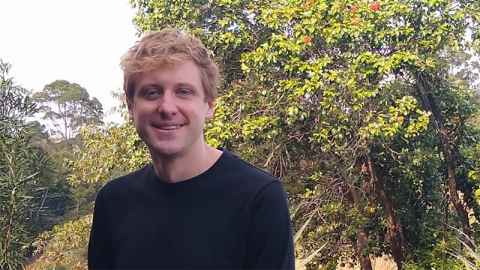Take 10 with... Ben Stevenson
Dr Ben Stevenson gives us 10 minutes of his time to discuss his work on developing statistical tools to answer questions about animal populations.

1. Describe your research topic to us in 10 words or less.
Developing statistical tools to answer ecologists’ questions about animal populations.
2. Now describe it in everyday terms!
Often ecologists want to understand changes in animal populations across time and space: how many animals are there, where are they, and are there more than there were before? However, wildlife surveys do not provide perfect information. Only a fraction of the animals will ever be detected, and their locations are only known for fleeting moments in time.
I develop statistical methods and software to fill in the gaps, for example, by transforming wildlife survey data into estimated population density surfaces across a region of interest.
3. Describe some of your day-to-day research activities.
Talking to ecologists, mathematically formalising their survey scenarios into statistical models, writing software to fit the models, and using the software to analyse wildlife survey data.
4. What do you enjoy most about your research?
This is probably a cop-out, but I enjoy the variety of different activities! I’ve always liked maths, and when I encountered programming as a student I was immediately drawn in. Working alongside ecologists has been an enjoyable experience since I began working in ecological statistics. I think I’d go a bit crazy if I only ever did one thing.
5. Tell us something that has surprised or amused you in the course of your research.
I’ve only ever helped with fieldwork on three occasions, each on separate projects, but every time I was blown away by the time, resources, effort, and planning required to conduct a successful wildlife survey. These experiences have given me greater respect for the data sets that land on my desk.
Now that I have a vague idea of what my collaborators went through to acquire their data, I am careful with how often I say things like “hmm, it would be nice if you could collect a bit more data for better precision”.
6. How have you approached any challenges you’ve faced in your research?
One challenge I’ve faced recently is that some of my methods have computational requirements that completely outstrip what is available on a standard desktop or laptop (e.g., requiring tens of gigabytes of RAM). In some cases, I’ve taken the easy option of using the great computing facilities provided by NeSI (New Zealand eScience Infrastructure). However, I worry this obstacle will hamper the uptake of my methods; ecologists studying wildlife populations in third-world countries, for example, are unlikely to have access to such facilities.
In two recent cases, my collaborators and I managed to reduce computational demands drastically by using existing statistical methodology and/or existing software in non-standard ways that hadn’t been considered previously. I think these sorts of efforts are key to maximising impact.
7. What questions have emerged as a result?
How can we develop methods and statistical software that are more accessible and useful for end users, who may only be equipped with a standard laptop? I suspect answers are out there for the problems I’m still using high-performance computing resources for. I’d like to hunt down either clever tweaks to model assumptions, or computational tricks that allow the fitting of the same or similar models but with reduced requirements.
8. What kind of impact do you hope your research will have?
From a wildlife management perspective, I hope my research will result in better-informed decision makers. From a statistical perspective, some of my recent work has revealed how and why a particular gold-standard method in statistical ecology can get the answer wrong.
I’m hoping to motivate researchers to consider the properties of these models a little more carefully, and to develop new methods that more closely approximate the random processes at play in wildlife populations.
9. When you collaborate across the faculty or University, or outside the University, who do you work with and how does it benefit your research?
My primary statistical collaborators are Professor Rachel Fewster (Department of Statistics) and researchers at my alma mater, the University of St Andrews in Scotland. They help me develop new ideas for improved statistical models in ecology, or better ways to fit existing ones.
I’m currently working on various projects in collaboration with ecologists worldwide, who provide data and interesting problems to work on. These projects include studies of snow leopards, gibbons, frogs, manta rays, invasive rats, and cetaceans, in locations such as Mongolia, Cambodia, South Africa, Indonesia, French Polynesia, California, the Canary Islands, and the Hauraki Gulf.
University of Auckland collaborators include Associate Professor Rochelle Constantine (School of Biological Sciences), Associate Professor James Russell (School of Biological Sciences/Department of Statistics), and Dr Melissa Bowen (School of Environment). I’ve also been fortunate to work alongside a fantastic group of research students on these projects.
10. What one piece of advice would you give your younger, less experienced research self?
Take particular time and care when writing to describe how you solved a problem, and why you solved it that particular way. Reviewer 2 might seem annoying, but often their misconceptions reveal an opportunity to communicate your ideas more effectively.